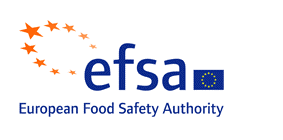Better surveillance to fight zoonotic infections

The European Centre for Disease Prevention and Control, the European Food Safety Authority, the European Medicines Agency, and the European Commission’s Scientific Committee on Emerging and Newly Identified Health Risks published an opinion on antimicrobial resistance focused on infections transmitted to humans from animals and food.
The joint opinion concludes that bacterial resistance to antimicrobials has increased in recent years worldwide, making it more difficult to treat some human and animal infections. It says surveillance activities should be strengthened and the development of new antimicrobials and new strategies to combat the spread of resistance encouraged. Research is needed on other strategies to control infectious diseases in animals, such as vaccination programmes.
Bacterial resistance to antibiotics
The opinion says there is specific concern about bacterial resistance to antibiotics used in the treatment of Salmonella and Campylobacter infections – the two most reported zoonotic infections in Europe, and points out which antibiotics are considered of high concern for their treatment. It says that although the use of antibiotics is considered the main factor in the development of bacterial resistance, the use of biocides (including disinfectants, antiseptics and preservatives) may also contribute to bacterial resistance.
“Antibiotic resistance is one of the biggest threats to public health in the EU and a priority area of work at ECDC. The major cause of antibiotic resistance in humans remains the use of antibiotics in human medicine. If the misuse and overuse of antibiotics continue, we will lose the means to treat serious infectious diseases,” said Dominique L. Monnet, Senior Expert and Coordinator of the Antimicrobial Resistance and Healthcare-Associated Infections at ECDC.
Global food trade
The opinion on antimicrobial resistance in zoonotic infections highlights that globalisation of food trade and frequent travel to countries outside the EU make it difficult to compare resistance data from surveillance programmes at EU level and to assess the impact of those strains coming from outside the EU. It also adds that the differences in levels of antimicrobial resistance in the various EU countries make it difficult to have a single strategy to fight against this threat.
“Resistance is caused by the ability of bacteria to undergo changes, given their increasing exposure to antimicrobials used in human and veterinary medicine. Most antimicrobial-resistant strains of zoonotic bacteria are found in the gastrointestinal tract of healthy food animals, particularly poultry, pigs, and cattle,” said Professor Dan Collins, Chair of EFSA’s Biological Hazards (BIOHAZ) Panel.
Food-borne infections caused by these bacteria very often originate from contamination during slaughter of animals or food processing. The opinion says that at present there are no data available to demonstrate that the use of antibiotics in human medicine may also have an impact on the resistance of zoonotic bacteria.
The 3 EU agencies and the SCENIHR have worked together on this issue, sharing their scientific expertise and advising EU decision-makers on risks and making recommendations for action. “This exercise has been an example of how different institutions within the EU can successfully work together to tackle the issue of antimicrobial resistance which currently represents a significant threat to human health,” said David Mackay, Head of Unit Veterinary Medicines and Product Data Management at the European Medicines Agency.
Source: European Food Safety Authority (Efsa)













